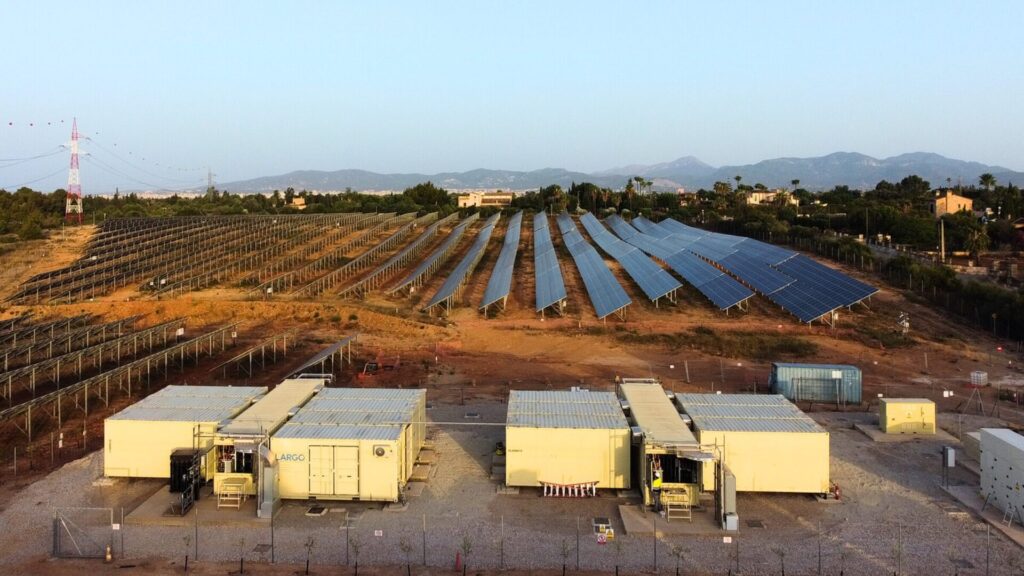Flow batteries
A sustainable way to store energy:
Flow batteries are mainly produced with low-cost materials and without ‘conflict’ materials such as cobalt.
Vanadium, the most commonly used electrolytes in flow batteries, is widely available. As well as through mining, vanadium can be recovered from waste products such as mining slag, oil field sludge and fly ash. When a vanadium flow battery is decommissioned, the vanadium electrolyte can be recovered and reused by up to 97%, leading to lower environmental impacts and a lower cost of ownership.
Flow battery technologies can also be based on organic electrolytes that avoid the use of metals completely. Sodium chloride, one of the main raw materials in organic flow batteries, is highly available in the European market. Indeed, the EU is the second largest producer of sodium chloride globally.
Even at 50GW of output, only a single-digit percentage of the annual salt mining in Germany is required for organic flow batteries. This results in substantial independence from global supply chains and scalability of applications in Europe.
Developing a local flow battery chain would lower the environmental impact of energy storage by reducing the emissions related to the transport of raw materials. As flow batteries have a longer operational time, the embodied energy amortised over the technology’s lifetime is lower than competing technologies.
Indeed, flow batteries have a very long operational life that can exceed 20 000 cycles and 20 years. During this period, flow batteries can cycle and recharge with almost no loss in power. A longer operational time likewise means less energy is needed to construct and maintain flow batteries across their entire lifecycle. Finally, flow batteries are modular meaning that individual parts can be replaced or reused if necessary.


Flow batteries are an inherently safe technology.
Advantages and benefits
The battery materials have low flammability: for instance, one of the key advantages of an aqueous flow battery is that “thermal runaways” are not possible, as the key component of the non-flammable electrolyte is water.
– Flow batteries have been installed in several places for a wide range of applications. They are a reliable, low cost and environmentally benign method for electrical energy storage.
– Flow battery technology is modular and scalable so systems can be made to suit a wide range of applications, from power ratings of watts to megawatts, and with energy durations of many hours or even days.
– The battery can be constructed of low cost and readily available materials, such as thermoplastics and carbon-based materials. Many parts of the battery can be recycled. Electrolytes can be recovered and reused, leading to low cost of ownership.
– The battery materials have low flammability and low environmental impact.
– The electrolytes can be used as part of the heat management strategy for the battery, reducing the need for complex heating or cooling of the battery system. This reduces costs.
– Because electrochemical cells share a common electrolyte each cell can be in the same state of charge, simplifying cell balancing and battery operation. The state of charge of the whole system can be measured at a single point (or several measurement points can be used to check the correct functioning of the battery system).
– Overcharging and fully discharging do not usually cause permanent damage to the electrodes or electrolytes.
– There is limited self-discharge in standby mode and, when shut down, there is no self-discharge.
– Energy storage capacities are independent of their power rating and so flow batteries are highly suitable for long-duration energy storage. As the incremental cost of increasing energy storage capacity reflects the cost of tanks and the electrolyte, the overall cost of a long-duration battery is lower than for other battery types.

